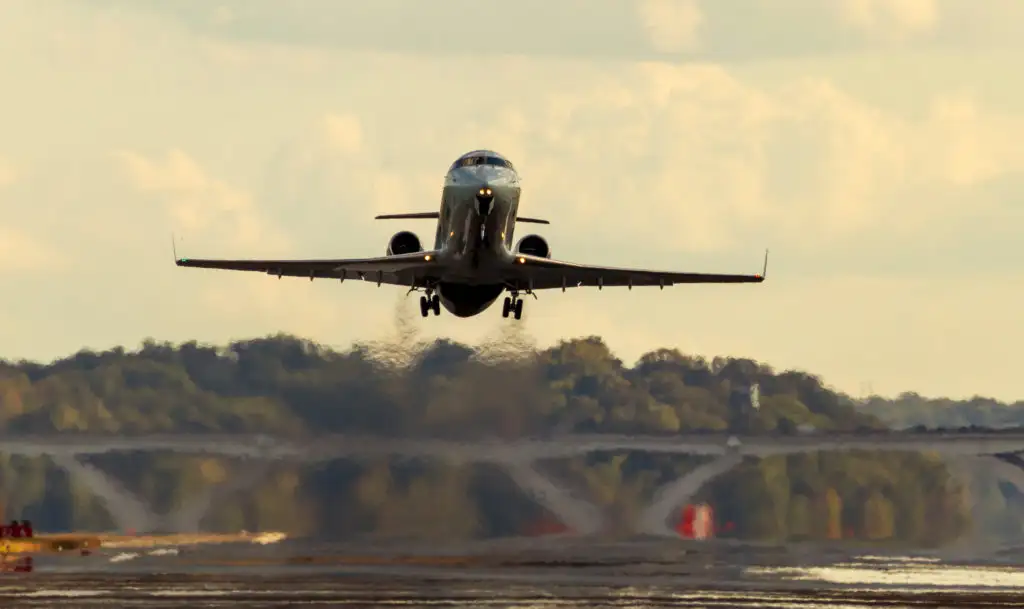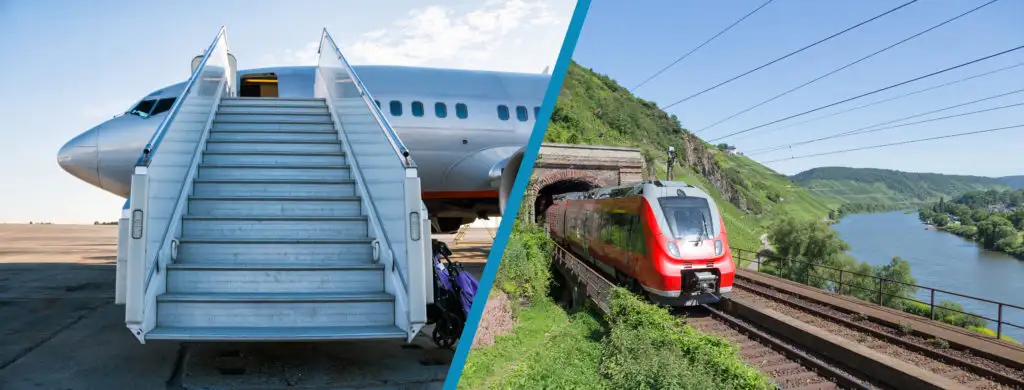If you want to hop on a short flight to get around Europe, you may have to look for another option in the future. The emergence of several low-cost airlines over the past few decades has led to incredibly cheap flights around the continent but it has also resulted in aviation becoming the fastest-growing source of greenhouse gas emissions in Europe.
An October 2021 report from Greenpeace indicates that emissions from aviation rose 29 percent between 2009 and 2019 in the European Union (EU). The environmental group suggests that one third of the busiest short-haul flights in Europe could be traveled by train in under six hours and is calling on the EU to ban such flights. While a Europe-wide ban is not imminent, some nations have taken action to ban short-haul flights within their own nations.
France Bans Short Domestic Flights

In April 2021, French lawmakers approved a ban on domestic flights where rail alternatives take two and a half hours or less. This mainly affects flights between Paris-Orly Airport (ORY) and cities like Bordeaux, Lyon, and Nantes. However, there is an exception for flights primarily intended for connections to further destinations, so shorter flights that route through Paris-Charles-de-Gaulle Airport (CDG) continue to fly.
The rule is part of a larger climate bill with a goal of lowering the nation’s emissions 40 percent by 2030 compared to 1990 levels. The ban doesn’t go as far as the French Citizens’ Climate Convention had hoped, which called on a flight ban where it was possible to travel by train in under four hours. Nonetheless, the ban eliminates 12 percent of domestic flights according to The Guardian.
While France holds the presidency of the Council of the European Union for the first six months of 2022, it does not plan to push the agenda for a bloc-wide ban on short-haul flights across Europe. Transport Minister Jean-Baptiste Djebbari told Poltico, “In France, we have a very specific rail network, with a lot of high-speed trains. It’s possible that we have the discussion [at an EU level], but so far we have a national approach, given the national railway network.”
Other European Countries Considering Ban
Austria tied its national carrier’s pandemic bailout in 2020 to the elimination of domestic flights that could be traveled via train in under three hours. This meant that Austrian Airlines stopped flying its Vienna-Salzburg route and train schedules increased between Salzburg’s central station and the international airport in Vienna.
Shortly after France voted on its ban, Spain’s government proposed a similar ban as part of its Spain 2050 project. If the ban were to go into effect, Spain would lose flights between Madrid and both Alicante and Valencia. It could also lose a very popular route between Madrid and Barcelona, which is exactly 2.5 hours long by train.
Germany’s Green co-party leader and Federal Minister of Foreign Affairs Annalena Baerbock has said, “Short-haul flights should no longer exist in the future.” Her sentiments are shared by the majority of Europeans. In a survey by the European Investment Bank (EIB), 62 percent support a ban on short-haul flights.
Short-Haul vs Long-Haul Flights: Comparing Emissions

It’s no doubt that flights produce more carbon emissions than trains. The report from Greenpeace states that, on average, trains emit five times less CO2 than a plane on the same route. However, long-haul flights are still responsible for the majority of emissions in the EU.
The European Organization for the Safety of Air Navigation, commonly known as Eurocontrol, provided a data snapshot showing that flights over 4,000 km make up half of the CO2 emissions yet only account for six percent of flights from European airports. On the other hand, 31 percent of flights were under 500 km, but accounted for just four percent of the total CO2 emissions.
This shows that while any reduction in carbon emissions will help, the aviation industry’s problem will not be solved simply by banning short-haul flights. According to Greenpeace, the expected climate impact of the French ban will be less than one percent reduction in CO2 emissions from air transport.
Flights vs. Trains: Comparing Travel Times and Prices

When comparing flights to train travel, many point to the fact that train travel is often quicker and more convenient than flying within Europe. Assuming you are trying to travel between the city centers, there are several examples where this holds true.
Let’s look at a trip between Amsterdam and Paris. You’ll likely need to add at least an extra two hours to the flight time in order to cover travel to/from the airport as well as checking-in and clearing airport security.
- Amsterdam to Paris by flight: 1h 25m + 2h airport travel = 3h 25m
- Amsterdam to Paris by train: 3h 20m
As you can see, it may be a shorter commute between Amsterdam and Paris if you take a train instead of a flight. Of course, cost is also a factor. Ticket prices can vary quite a bit, but looking at an advanced booking, I see train tickets for around $42 and flights for around $67. Add in the cost of traveling between the airport and the city center and flying could cost at least twice as much as taking the train on this route.
There are also cases where flying is currently much cheaper than taking the train. For example, if you’re looking to travel between Milan and Naples, the competition from low-cost airlines often makes flying more affordable. And flying is usually quicker even after adding in the extra travel time to/from the airport.
- Milan to Naples by flight: 1h 30m + 2h airport travel = 3h 30m
- Milan to Naples by train: 4h 30m
Looking up prices for tickets purchased in advance, flights are as low as $5 on airlines like Ryanair and Wizz Air, while train tickets cost around $63. The cheap flights do come with many extra fees but it’s still very possible to keep your total flight cost under the price of a train ticket on this route. Plus, it will often result in a shorter total travel time. However, if you factor in convenience, comfort, and your carbon footprint, you may prefer to travel by train.
Bottom Line
It may be difficult for a Europe-wide ban on short-haul flights to gain much steam considering rail networks vary by country, but it’s likely we’ll see more European nations start to reduce flights where train travel is a viable alternative.
You Might Also Like:
• The Most Expensive Airports in the U.S. To Fly From• Which US Airline’s Basic Economy Fare is the Best?
• 10 Ways to Speed Through Airport Security
• Southwest Ends Free Checked Bags for All
• The Best Ways to Kill Time at the Airport
We hand-pick everything we recommend and select items through testing and reviews. Some products are sent to us free of charge with no incentive to offer a favorable review. We offer our unbiased opinions and do not accept compensation to review products. All items are in stock and prices are accurate at the time of publication. If you buy something through our links, we may earn a commission.
Related
Top Fares From Indianapolis, IN
Today's Top Travel Deals
Brought to you by ShermansTravel
Shop and Save with Country Inns...
Patricia Magaña
 Hotel & Lodging Deals
Hotel & Lodging Deals
$229 -- Chicago: Discounted Rates and...
Francesca Miele
 Hotel & Lodging Deals
$229+
Hotel & Lodging Deals
$229+
$188 -- Honolulu: Save on Oceanview...
Abigail Lamay
 Hotel & Lodging Deals
$188+
Hotel & Lodging Deals
$188+




